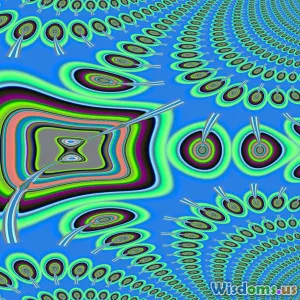
Are We More Conscious in Our Dreams or While Meditating?
13 min read Exploring consciousness levels in dreams versus meditation with science, philosophy, and real examples to deepen self-awareness and understanding. (0 Reviews)
Are We More Conscious in Our Dreams or While Meditating?
Imagine stepping into a world where your awareness feels boundless — where thoughts unfold naturally and the perception of reality shifts dramatically. The realms of dreams and meditation offer exactly these pathways. But which state invites truer or heightened consciousness? Are we more aware in the fluid world of dreams, or in the focused stillness of meditation?
This question stretches beyond casual curiosity, inviting us to explore the depths of consciousness itself. Let’s embark on a detailed journey into these two fascinating states of being, from scientific studies to philosophical wisdom, guiding you to new understanding and perhaps inspiring your own conscious exploration.
Understanding Consciousness: Defining Awareness
Before comparing dreams and meditation, it’s essential to define the term “consciousness.” Across neuroscience, psychology, and philosophy, consciousness generally refers to the state of being aware of and able to experience one’s environment, thoughts, and self.
Psychologist Michael Gazzaniga describes it as "the intricate experience of awareness and self-reflection that allows for decision-making and introspection." Consciousness is often viewed as a spectrum ranging from minimal awareness (such as during deep sleep) to full wakeful alertness.
Crucial to our discussion is that consciousness includes both phenomenal experience — the subjective feeling of “what it's like” to be — and access consciousness — the ability to manipulate and report on information.
Consciousness in Dreams: Exploring the Subconscious Frontier
Types of Dreams and Awareness
Dreams are primarily experienced during the rapid eye movement (REM) stage of sleep. Dreams vary widely, from bizarre scenarios we barely remember to vivid narratives with intense emotions.
Importantly, lucid dreaming is a subset where dreamers become aware they are dreaming while still inside the dream. This intentional meta-awareness transforms the dream into an interactive experience where consciousness becomes strikingly evident.
Scientific Findings on Dream Consciousness
Functional magnetic resonance imaging (fMRI) and EEG studies reveal that during REM sleep, several brain areas associated with emotion, vision, and memory become highly active, while the prefrontal cortex — responsible for logic and self-control — shows reduced activity. This mixture partially explains the surreal content mixed with diminished critical reflection.
However, during lucid dreaming, research shows increased prefrontal cortex activity, similar to wakefulness.
A study by Voss et al. (2009) demonstrated that lucid dreamers exhibit enhanced gamma brain wave activity (30–40 Hz), correlated with higher cognitive functions, including self-awareness and volitional control.
Examples of Lucid Dreaming Consciousness
Lucid dreamers often report a rich sense of self-awareness, agency, and the ability to reason logically. Nobel laureate Stephen LaBerge, a pioneer in this research, famously conducted experiments where he signaled from within the dream with predefined eye movements, proving conscious communication from a dreaming state.
These experiences suggest lucid dreams might offer heightened awareness compared to ordinary dreams, bridging unconscious processing and conscious thought.
Challenges to Dream Consciousness
Though lucid dreams indicate enhanced awareness, the overall dream state remains subject to bizarre narrative logic and emotional volatility, often lacking the clarity and stability of full wakefulness.
Unlucid dreams tend to be passive experiences with limited reflection on self or environment, indicating a more subconscious mode of consciousness.
Consciousness in Meditation: A Journey Into Awake Awareness
Types of Meditation and Their Conscious States
Meditation is an umbrella term encompassing diverse practices aimed at cultivating focus, awareness, acceptance, or transcendent experience. Common forms include mindfulness meditation, transcendental meditation, concentrative meditation, and open-monitoring meditation.
Across these, a key goal is often heightened meta-awareness — observing thoughts, sensations, and emotions without attachment, fostering an acute, clear, and steady conscious presence.
Neuroscientific Insights into Meditative Consciousness
Studies utilizing EEG and fMRI reveal that experienced meditators can access profound shifts in brain activity. For example, increased alpha and theta waves during meditation correspond with relaxation and heightened internal focus.
Moreover, long-term meditators have demonstrated heightened gamma wave synchrony, linked to enhanced cognitive functioning and integrative consciousness — somewhat analogous to lucid dream findings.
A famed study by Lutz et al. (2004) documented that expert Buddhist monks exhibited remarkable gamma synchrony both during meditation and in resting wakefulness, suggesting meditation can train the brain to sustain high-level awareness.
Qualitative Experiences During Meditation
Many meditators report a calm yet intensely aware mental state—sometimes described as witnessing thoughts without attachment or merging with a deeper sense of presence beyond the self. This cathartic awareness contrasts with the fluctuating emotional dramas in dreams.
Eckhart Tolle, renowned spiritual teacher, describes meditation as “awakening out of the dream of mind” — an attunement to pure being and consciousness untouched by fleeting mental content.
Real-World Benefits Linking Meditation to Consciousness
Beyond subjective experience, meditation has been shown to improve attention regulation, emotional resilience, and cognitive clarity. A meta-analysis in Psychological Bulletin (2017) by Goyal et al. confirmed significant improvements in anxiety reduction, attention, and emotional well-being, reinforcing meditation as a tool for conscious mastery.
Comparing Consciousness in Dreams and Meditation
| Criteria | Dreams (Lucid) | Meditation |
|---|---|---|
| Level of Awareness | Emergent self-awareness; variability from absent to high in lucid states | Deliberate and stable meta-awareness, often cultivated |
| Nature of Consciousness | Emotional, often fragmented and surreal | Calm, clear, non-reactive, and stable |
| Control Over Mind | Limited without training; lax in typical dreams, high in trained lucid dreaming | Advanced meditators demonstrate profound control and insight |
| Brain Activity Patterns | High limbic (emotion) activity; prefrontal cortex active in lucid dreaming | Increased alpha/theta and gamma synchrony; enhanced prefrontal activity |
| Cognitive Clarity & Memory | Often fleeting or distorted due to dream logic | Clear, accessible, often heightened cognitive function |
Integrating Insights
Both states expand consciousness beyond typical waking awareness, but in different ways. Dreams — especially lucid ones — unlock creative, spontaneous self-reflection inside a symbolic, fluid environment. Meditation hones calm, constant consciousness creating deep insight and intentional control.
Far from opposition, these states complement one another: dreams tap into subconscious narratives, while meditation illuminates conscious clarity.
Philosophical and Cultural Perspectives
Philosophers from ancient to modern times have pondered consciousness.
- René Descartes' famous dictum, “I think, therefore I am,” underscores awareness as proof of existence, prominence in meditation.
- Eastern philosophies such as Advaita Vedanta or Zen Buddhism emphasize transcending illusory identification with the waking world, akin to meditative insights.
- Carl Jung viewed dreams as pathways to the unconscious, symbolic messages illuminating hidden facets of self.
In many cultures, lucid dreaming and meditation are spiritual practices facilitating enlightenment and psychological healing, underscoring their profound role in developing consciousness.
Practical Implications: Harnessing Both States
For Personal Growth
Exploring lucid dreaming can increase creativity, emotional processing, and even reduce nightmares. Training oneself to recognize dreams opens novel self-awareness avenues.
Meditation offers tools to reduce stress, refine focus, and cultivate compassion—practical benefits anchored in enhanced conscious living.
For Scientific and Therapeutic Use
Both states are being studied to understand consciousness disorders, PTSD, anxiety, and neuroplasticity. Clinical trials with meditation show promise in treating depression and chronic pain.
Lucid dreaming techniques are used in therapy to combat recurrent nightmares and anxiety, illustrating a direct therapeutic benefit.
Conclusion: Which State Is More Conscious?
Neither dreams nor meditation are universally “more conscious” in an absolute sense; rather, they embody different modes within the consciousness spectrum.
- Dreams (particularly lucid dreams) reveal a hybrid zone of spontaneous awareness where subconscious and conscious mind interplay unpredictably but profoundly.
- Meditation represents a cultivated, stable, and intentional expansion of conscious presence, characterized by clarity, control, and equanimity.
Ultimately, exploring both enriches our understanding of the mind and self. Lucid dreaming can guide us through the labyrinth of inner symbolism, while meditation invites us to remain aware in the present moment, transforming consciousness into purposeful being.
Consider integrating both into your life — cultivate lucid dreaming to explore the psyche, and meditation to anchor consciousness — and unlock the full potential of your mind’s mysterious landscapes.
References
- Voss, U., et al. (2009). "Lucid dreaming: a state of consciousness with features of both waking and non-lucid dreaming." Sleep, 32(9):1191–1200.
- Lutz, A., et al. (2004). "Long-term meditators self-induce high-amplitude gamma synchrony during mental practice." PNAS, 101(46), 16369-16373.
- Goyal, M., et al. (2017). "Meditation programs for psychological stress and well-being: a systematic review and meta-analysis." JAMA Internal Medicine, 174(3), 357-368.
- LaBerge, S. (1985). "Lucid Dreaming." Ballantine Books.
- Tolle, E. (1999). "The Power of Now." New World Library.
- Jung, C.G., "Man and His Symbols." Dell, 1968.
Rate the Post
User Reviews
Popular Posts


















